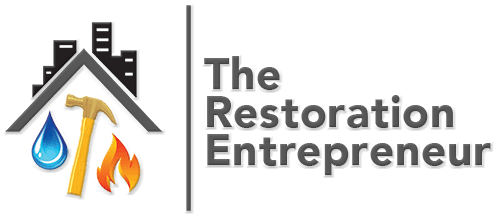
The only certification required in our industry is the 3-day Water Restoration Technician Certification (WRT). This provides the foundation knowledge base for our work.
Some course sponsors combine Water Restoration Technician with the Applied Structural Drying (ASD) course in a five-day course. What makes this course so valuable is the use of a training house. The house, comprised of various building materials, is hosed down with a garden hose saturating flooring and other building materials. Through the five-day course, participants conduct moisture inspections, take psychrometric readings, prepare moisture maps, set up equipment, and perform daily drying monitoring. The class provides a level of practical experience that is unmatched through any other combination of training events. I consider it a must for a new owner.
What is Xactimate?
Xactimate is the pricing platform used to prepare the scope of repair along with customary charges. Insurance companies require it’s use, and its an industry norm. The three-day Xactimate Fundamentals course is a must for every new owner. Companies can outsource Xactimate estimate writing, but owners must be able to get around in the program. Gaining familiarity through the three-day course is essential to managing repairs and properly billing for completed work.
Importance of Having Certifications in the Water Restoration Industry
EPA’s Lead Renovation, Repair, and Painting Rule (RRP Rule) require that firms performing renovation, repair, and painting projects that might disturb lead-based paint in homes built before 1978 have their field workers and firm certified by EPA. The certification is earned in a one-day RRP Course.
Other courses are helpful to the new owner and his field workers, but those already listed are the essential ones.
Since mold exposure can create liability, it is best for restorer’s to be certified in mold remediation. The IICRC provides the industry-standard Applied Microbial Remediation Technician (AMRT). A company would be in a tough spot if there a liability issue occurred, and the company workers performing the mold remediation are not certified.
This could be a requirement for the first technician hired, or one could be sent to class before mold work is begun.
Many additional training courses could be valuable to the owner and field workers, but these are the essential minimum.
Additional Training
Other helpful, but non required courses for the owner might at some time include:
- General Contractors License
- Haag Certified Roofing Inspector
- Certified Aging in Place Specialist (CAPS)
Additional technician training could include:
- Carpet Cleaning (CCT)
- Carpet Repair & Reinstallation (RRT)
- Fire & Smoke Damage Restoration (FSRT)
- Odor Control Technician (OCT)
There is a lot of training and information support available in the industry to a new owner and to a restoration startup company.
Below are the postings of the How to Start a Restoration Company Series. I hope together they will answer most of the critical questions you have. Afterward – give me a call, and let’s talk about how to put it all together! Click on the title to view.
- How to Start a Restoration Business Series
- Is the Restoration Industry Recession-Proof?
- What Services Should a Startup Restoration Company Provide?
- How Much Money Can a Restoration Company Startup Make?
- Should a Restoration Company Startup Begin as a Mitigation-Only or Full-Service Company?
- How to Organize a Restoration Company Startup
- Restoration Company Startups Need Training & Certifications
- Restoration Company Startups Need Equipment & Personnel
For more information or help to start your restoration business contact me at https://www.growmyrestorationbusiness.com/contact-us
